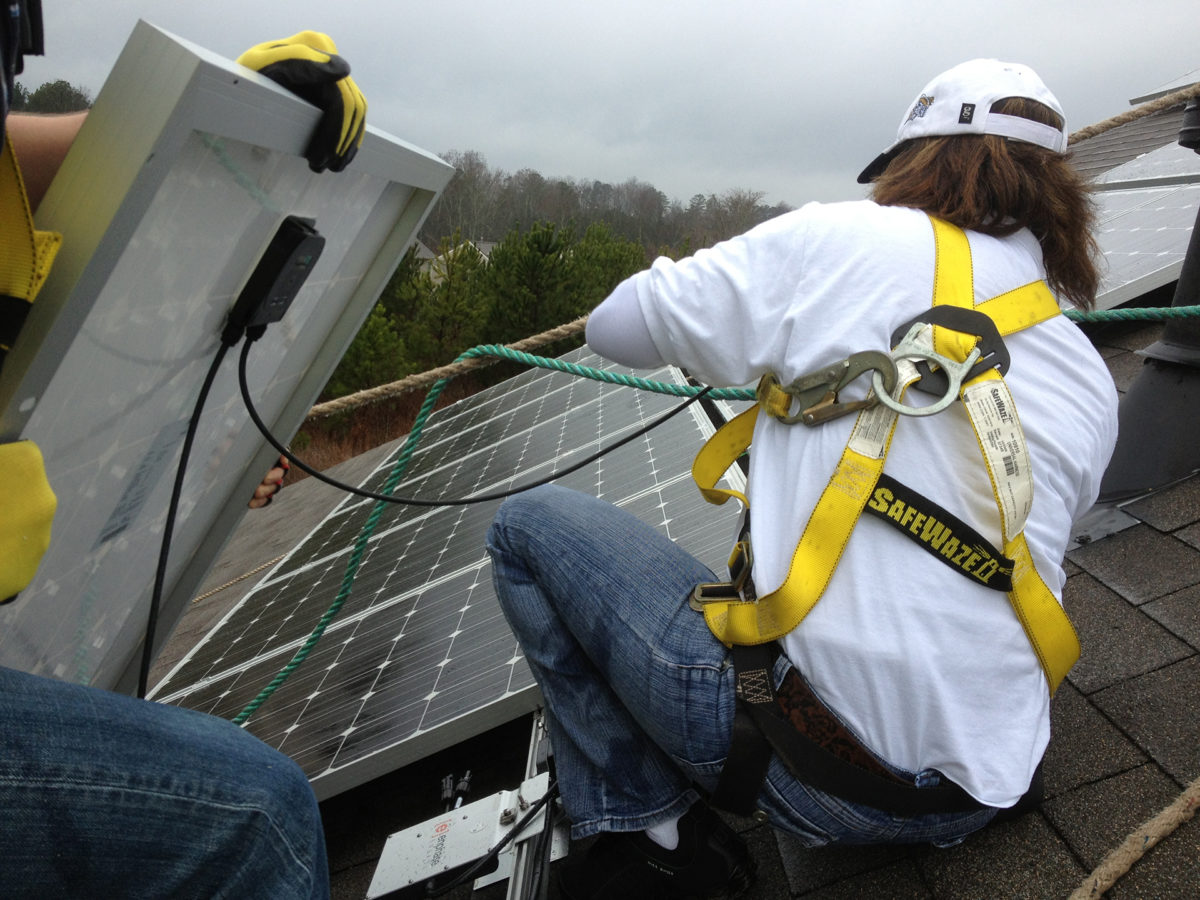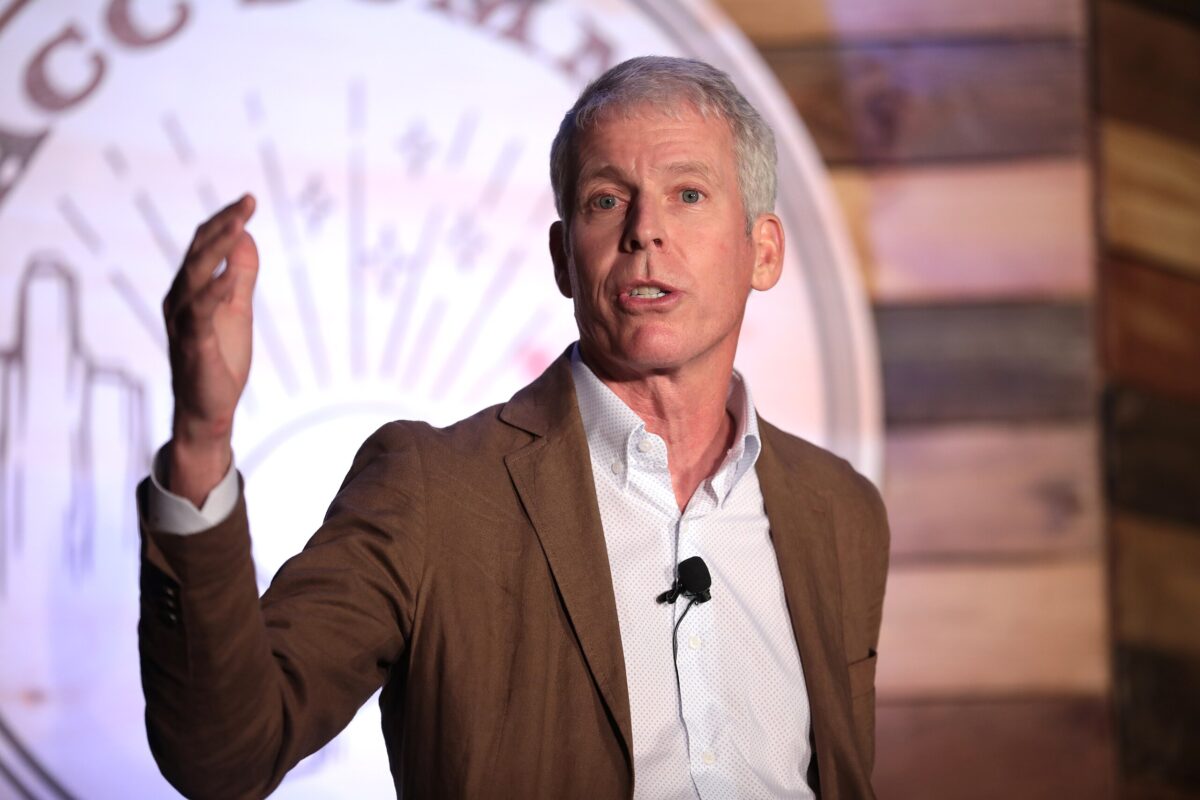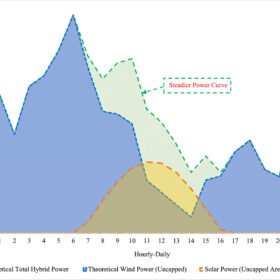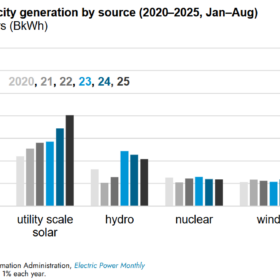On July 1, 2022, regulators and utilities in the state of Indiana killed rooftop solar.
Rulemaking proceedings led to the slashing of net metering, a program in which utilities pay customers for their excess solar generation. Net metering has been pivotal in launching rooftop solar, a technology that supports climate resilience in the grid, launched local businesses and helps residents save on their electric bills.
Indiana Governor Eric Holcomb signed a bill in 2017 that put the state on a path to phasing out net metering by 2047. Meanwhile, it let utilities begin paying solar customers a lower rate when solar penetration reached 1.5% of their summer peak load, or by July 2022. Net metering rates are often lowered over time as a way to avoid cross-subsidization of solar owners by non-solar owners, and a way to retain profits for electric utilities. However, national laboratory studies have shown that until rooftop solar reaches 10% of the grid mix, it leads to a negligible cost to utility companies, and can instead lead to cost savings.
Utilities in Indiana wasted no time in aggressively slashing net metering rates. On July 1, 2022, investor-owned utility CenterPoint Energy switched from monthly net metering to a new model known as “instantaneous netting.” Under instantaneous netting, customers pay the full retail rate for all power used from the grid, and all solar power sent back to the grid is paid at the much lower “excess distribution generation” rate.
Overnight, CenterPoint was approved by the Indiana Utility Regulatory Commission to pay their customers $0.031/kWh for solar, and northern Indiana utility NIPSCO was approved at $0.026/kWh. Since then, net metering payment rates have creeped up to about four or five cents per kWh as power prices have increased considerably following the invasion of Ukraine.
The new rates altered the estimated typical residential solar payback period from the seven to 10 years to 21 years or more, a value proposition that Hoosiers haven’t been able to stomach.
The rates are so unpalatable that only two NIPSCO customers have installed rooftop solar since July 1, 2022, reported Ben Inskeep, program director at Citizens Action Coalition (CAC). NIPSCO serves over 1.2 million customers.
CenterPoint has had roughly 100 rooftop solar installations, and across the state’s four other utility companies, only 124 customers have applied to go solar under the new rates, reports the Indy Star.
The ratemaking case has found its way to the Supreme Court. Solar advocates argue that the 2017 Holcomb bill never had provisions that allowed for “instantaneous netting.”
“We prefer to call this ‘no netting’, because there really is no netting that’s happening,” said Kerwin Olson, executive director of CAC.
The shorter the interval of netting excess solar production, the lower the payments to rooftop solar customers. Analysis by CAC found that once the Investment Tax Credit (ITC) from the Inflation Reduction Act steps down to zero, payback periods for rooftop solar could exceed 30 years.
The ratemaking debacle highlights an ongoing critical issue for residential solar rollout: uncertainty. Reducing uncertainty was one of the main motivations for the industry push to have the ITC extended for a decade, rather than the piecemeal way it had been extended historically.
“It’s hard to say what your compensation will be in the future — it will change every single year,” said Inskeep.
“You’re making a 25-year investment, but the value is updated on an annual basis. You have no ability to see if your investment will pay off. Utilities never make large investments for 30-year assets without having certainty for that cost recovery. Now they’re asking residential customers to take that risk — with no ability to understand when their investment will pay off or if it will never pay off,” he said.
A similar battle between utilities and a coalition of consumer advocates, environmentalists and solar industry members is raging across the nation in various markets. The nation will be watching Indiana’s Supreme Court case as well as the ruling on Net Metering 3.0 in California as waypoints to determine the fate of rooftop solar.
This content is protected by copyright and may not be reused. If you want to cooperate with us and would like to reuse some of our content, please contact: editors@pv-magazine.com.









As I’ve been employed by a very large electric utility for over 32 years, even I am surprised by the aggressive resistance to roof top Solar in the different localities by the utilities. They should embrace the idea that their customers are willing to place risk capital to work to help diversify the grid. FERC needs to step in and somehow alleviate this tension.
Installing an off-grid solar system with batteries is the only “Green” way to go. What you generate you use or store to use latter. The utility only makes up any difference you need in long periods of dark skies, and you know what you are buying.
We need to quit asking government to guarantee our profitability. That goes both ways. For the utilities and for the “Individual Energy Producer”. Deregulation is the answer. Now, you can sell to, or purchase from, wherever or whomever has the best deal for you.
It took me four years, but I am now to the point where I overproduce my needs, have battery storage and my electric utility is my “back-up generator”. And I still have my own generator.
Personally, I don’t care what my “payback period”, “break even period” or “ROI” is. My system is paid for. Am I pretty sure that I can come up with $20 a month for my meter charge? Yes. Am I sure, at all, that I can come up with $200.00 PLUS per month for electricity from someone else? NO, not so much!
Only two customers interconnected with the utility. “The rates are so unpalatable that only two NIPSCO customers have installed rooftop solar since July 1, 2022, reported Ben Inskeep, program director at Citizens Action Coalition (CAC). NIPSCO serves over 1.2 million customers.” These only counts “grid connected” solar rooftop systems. Off-grid systems of under 50 volts, do not require any permits or registration so there could be thousands of homes with off-grid solar and they would never know. The “Solar Underground” or what some people call the “Gorilla solar contingent” are building systems that power most of their home and only keeping the utility as back up or running just the 240-volt appliances to get a small bill each month.
Once the cost of batteries come down the utilities are going to start losing customers as more people go off grid. Unfortunately this will not happen in bulk until the roll out of cheaper and safer storage technologies that are just beginning to reach market, but will take at least 5 to 10 years to really ramp up.
I used 80 deep cycle lead acid batteries on my off-grid system giving and equivalent of 4 Tesla power walls of storage for a price of $7,200.00 with no chance of a fire and with quick changing lugs for fast replacement. Replace every 6 years or 72 months and it works out to $100.00 per month for batteries including the sales tax. When I can get 12-year batteries for that price it will be only $50.00 per month for batteries.
A simple alternative to lousy solar NEM deals WITH nothing to install or maintain, is to buy U. S. Treasury Series-I Savings Bonds paying 9.65% annual dividends quarterly and compounded in I-Bonds.
You can purchase $10,000/yr per individual, tax free at state level. And another $5,000 with any income tax refunds that are due you.
Unlike solar panels after 30 years, they’re still worth what you paid for them, or expensive batteries you’ve replaced two or three times.
Just the initial one year purchase of $10,000 will net you $148,000 before taxes or an average of $4,900/yr over their 30 year maturity.
I-bond earnings can be used to offset what you’ve spent for electricity, other utilities, or anything else your heart desires.
Solar NEM can’t do that…can it?
David, series I bonds only pay that rate for 6 months and that was only if you purchased between May and the end of October. Now those funds are earning below 7, and at some point will likely be zero.
9.65% dropped to 6.96% through Apr 2023. 3X to 4X better than money markets. And the rate you purchase is good for the 30 year life of the bond…when most rooftop systems are due for recycling along with your 2nd or 3rd set of batteries.
Utility stocks like DUK pay 4% or more. All are options for those who don’t own their roof (condos, HOAs, renters) or a suitable relatively new shade free one with south facing pitch in northern climes.
Dark winter skies and snow cover doesn’t impair those returns either.
Dave those rates are only good for 6 months! Twice a year the ibond rates are calculated as a sum of a base rate and an inflation adjusted rate. Currently the base rate is ZERO, which IS good for the life of the loan, but the inflation portion of the rate changes every six months. You will not earn these high rates for 30 years, probably not even 3 years.
Yes, you are correct if it was only about MONEY, but this is about saving the planet one household at a time. The political will of each household is shown by where they are willing to spend their disposable income. From political contributions to candidates that show support of a renewable future to installing solar panels or energy efficient appliances, we all vote with our dollars. The great thing about living in utility areas that charges 40 cents and above per kilo watt hour for electricity is people will conserve or install solar to save money and they get the best payback if they do. As Al Gore demonstrates in his film “The inconvenient truth”, you have a scale with bars of gold on one side and the globe of the earth on the other and solar panels can give both value and climate changing relief to keep the scale balanced. Adding batteries to a system only give energy independence for power failures and a little to cover nighttime usage but do not make a lot of economic sense unless used to go fully off grid.
The best grid to get off is China’s coal fired one. Which means making our own wretched excess that we used to be able to afford with paychecks from our shuttered factories that employed ten+ million American workers. And we’d consume and waste less in the process.
Most households don’t buy into the green benefit from $olar…it’s mo$tly about $aving GreenBacks.
Especially when Al Gore’s mansion consume’s 20X the kWh than the average US household. John Kerry’s worse. DWISay-NWIDo..hmmm.
The next glaciation that will cover much of North America with another Laurentide Ice Sheet two miles thick has been pushed back ~10,000 years according to some…THANKS to warming…we think.
Earth’s 42-million feet in diameter and sea levels have risen and fallen hundreds of meters countless times in the past…largely tied to Milankovitch cycles and solar activity…we think.
Man is gonna do what? Zackly?
A thermostat on the sun might be a possiblity if astronauts can go in at night.
China is manufacturing and installing solar panels 4 times faster than we are in the USA. They lack the oil reserves and natural gas reserves we have here in North America and use the cheapest fossil fuel they own, COAL, but are committed to replace it because of the poor air quality they must endure by using it. Corporate America shuttered the plants in the USA because the cheap labor in China was so appealing. The rest of the rant is not even sound or scientifically possible over the period of 100 years as out industrial revolution brought us to this point. Typical climate changes take thousands of years to happen and carbon dioxide levels are rising faster today than in times past in reordered history over the past 100,000 years as seen in ice core samples. This article, about government restrictions on the profitability of rooftop solar, is not the place to go “off topic” about other things.
Here is what California government wants to do. Supported by our Governor, I think the AFLCIO, and the utility companies. the PHC will vote on it next month. Judging by the political climate here in Ca, I think it will pass. It is a transfer of wealth situation: Currently, the credit for exported surplus energy ranges between $.022/kWh and $0.36/kWh. With NEM 3.0, the rate substantially decreases to only $0.047/kWh and $0.058/kWh. It was based on the state’s avoided cost calculator, which estimates the value of distributed excess solar energy to the public grid. Plus, Besides higher rates for electricity consumed when solar panels aren’t generating power, NEM consumers have to pay $8 per installed kW of solar capacity monthly. The grid participation charge (https://www.cpuc.ca.gov/industries-and-topics/electrical-energy/demand-side-management/net-energy-metering/nem-revisit/net-billing-tariff-fact-sheet)
supposedly levels every consumer’s access to the public grid.
Glad I left CrazyCali decades ago. Has some nice places to visit, but way 2woooo Expensive to live there and risk shakers destroying what forest fires leave behind.
CA wastes five feet of water per year growing rice in flooded desert lands near Sacramento for export to Turkey. And half the annual snow melt evaporates in unshaded waterways en route to Los Angeles. Still flooding fields of crops in central valkey for irrigation. Hmmm…
That should say enough.